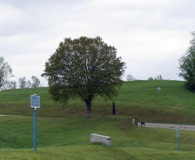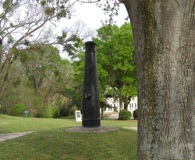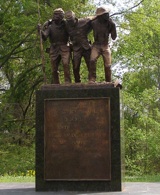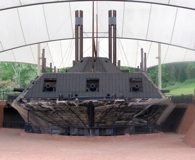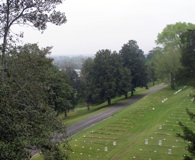The debate remains eternal for devotees of the Civil War’s Eastern and Western theaters: Which event was more significant in the war’s outcome—the fall of Vicksburg on July 4, 1863, which gave the Union complete control of the Mississippi River, or General Robert E. Lee’s setback at Gettysburg one day earlier?
No matter what side of that debate you’re on, a visit to Vicksburg National Military Park is a must for any buff. Besides the rich history associated with this charming corner of the country, Vicksburg has perhaps the finest collection of monuments and state memorials of any Civil War battlefield. Plus traveling the park’s 16-mile tour route allows visitors to experience the battlefield’s distinctive topography firsthand.
This guide focuses on the National Military Park itself and sites in and close to the city. A guide to the entire Vicksburg Campaign, which ran from March 29 to July 4, 1863, will appear in a future issue.
The original oak tree at the Grant–Pemberton “Surrender Interview Site” somehow survived the 47-day Union siege, but soldiers quickly chopped it apart for souvenirs once an armistice was reached on July 4, 1863. A new oak and an upright 42-pounder siege cannon (left and right, above) mark the site today on what is now known as Pemberton Avenue.
The Shirley House (above, middle), the only extant wartime structure in the park, is being restored and is currently not open to the public. Referred to by troops from both sides as the “White House,” it served as headquarters for the 45th Illinois Infantry during the siege. Soldiers from the 45th built hundreds of bombproofs around the house to protect them from Confederate artillery fire.
Eminent local sculptor J. Kim Sessums created the new Mississippi African American Monument (above, left), which pays tribute to the contributions of the state’s black soldiers and citizens during the Civil War. Financed by the state and the city of Vicksburg, the monument was erected on the battlefield in 2004.
USS Cairo, one of the famed “Pook Turtle” ironclads that patrolled the region’s waterways for the Union during the Civil War, was sunk by an electrically detonated mine on December 12, 1862. Pulled from the Yazoo River mud in the early 1960s, the partially restored vessel and thousands of intriguing, well-preserved artifacts are on display in the park’s USS Cairo Museum.
The scenic yet solemn Vicksburg National Cemetery (above, right) next to the USS Cairo Museum was established in 1866 to honor Union soldiers who died during the campaign. The remains of only about 5,000 of the 17,000 soldiers buried here have been positively identified. Confederate soldiers who died at Vicksburg are buried in the Cedar Hill Cemetery.

